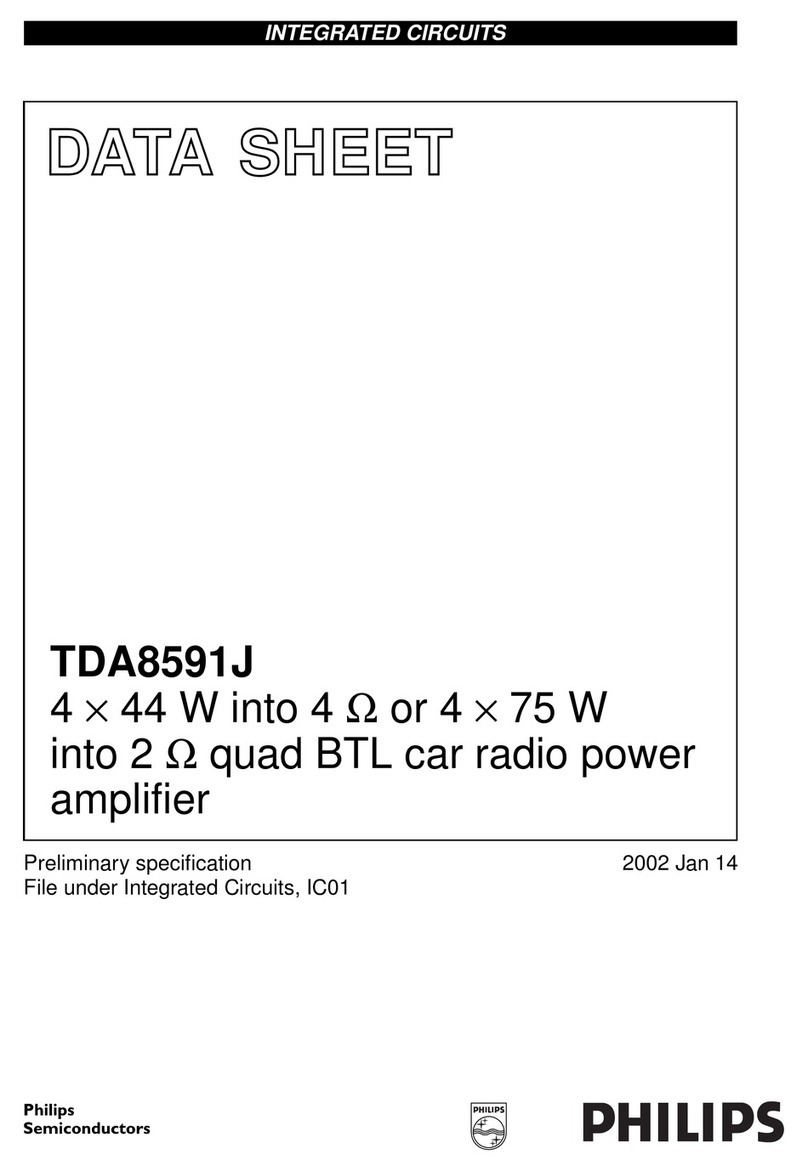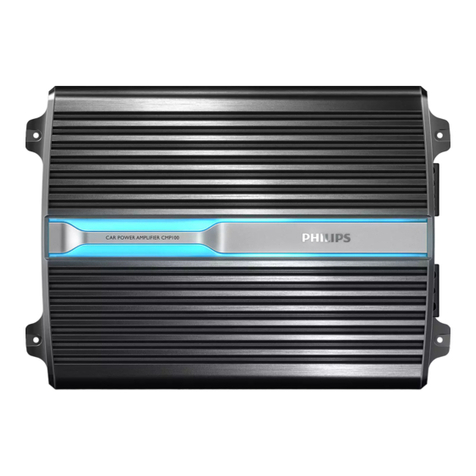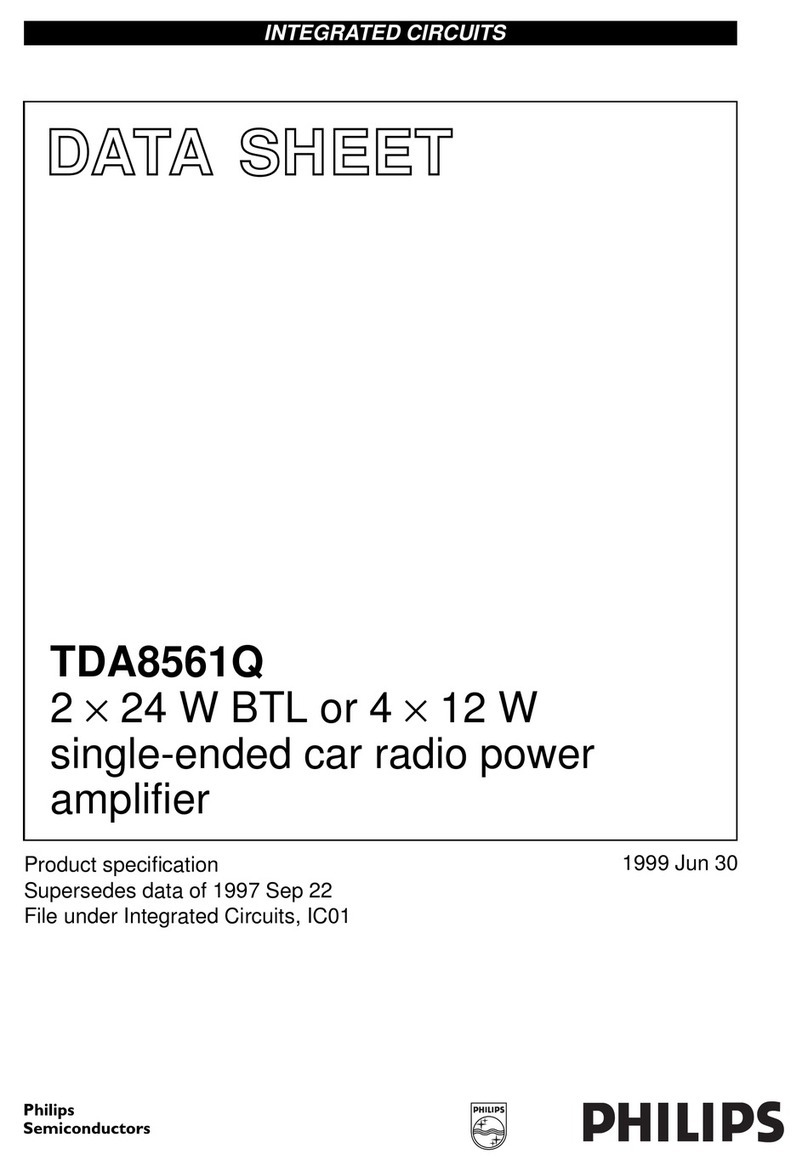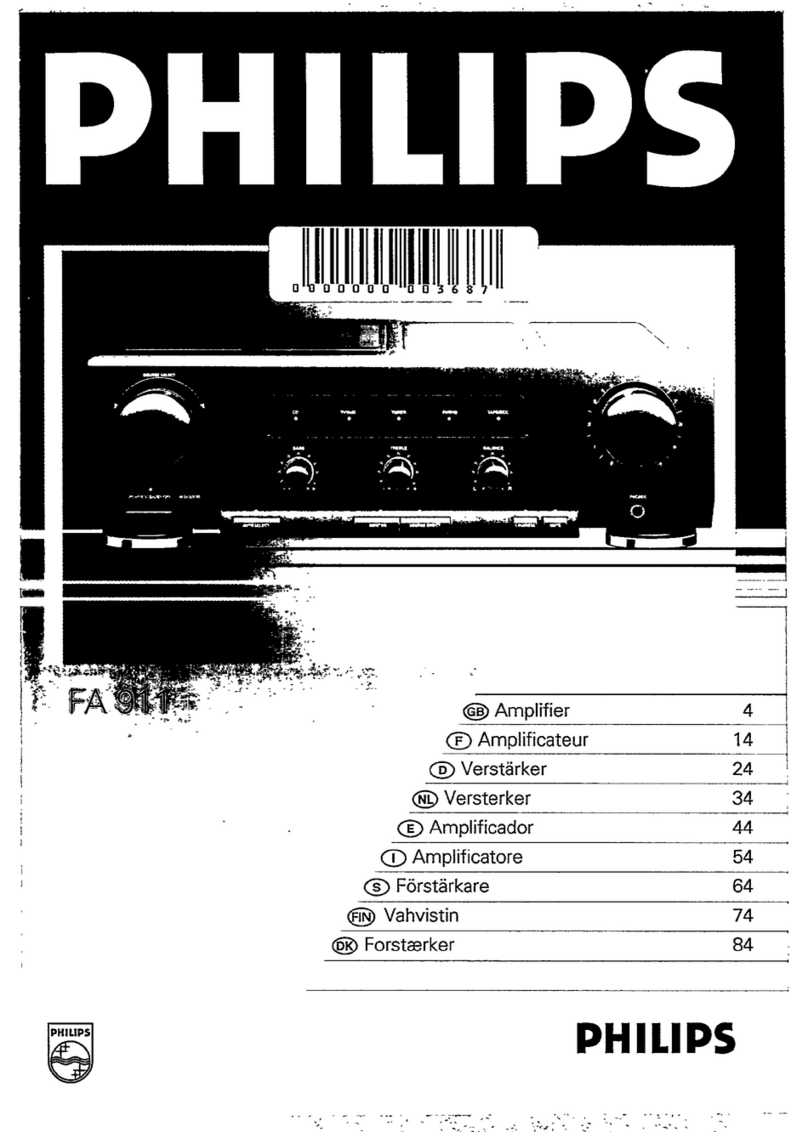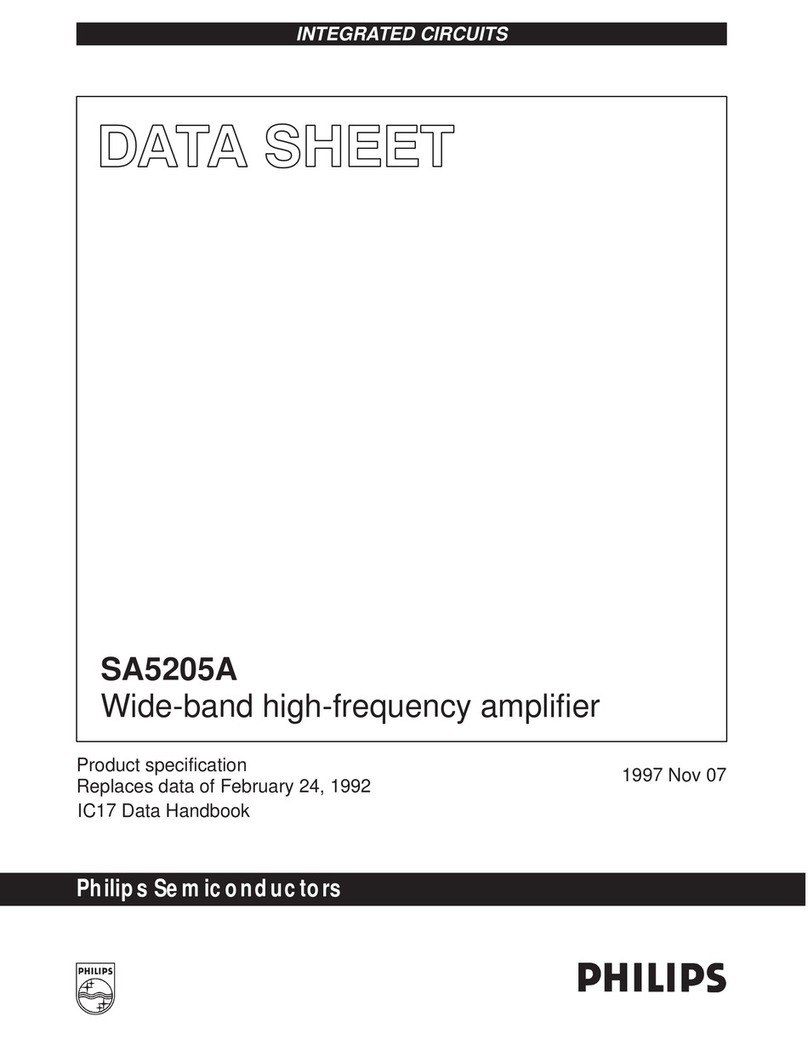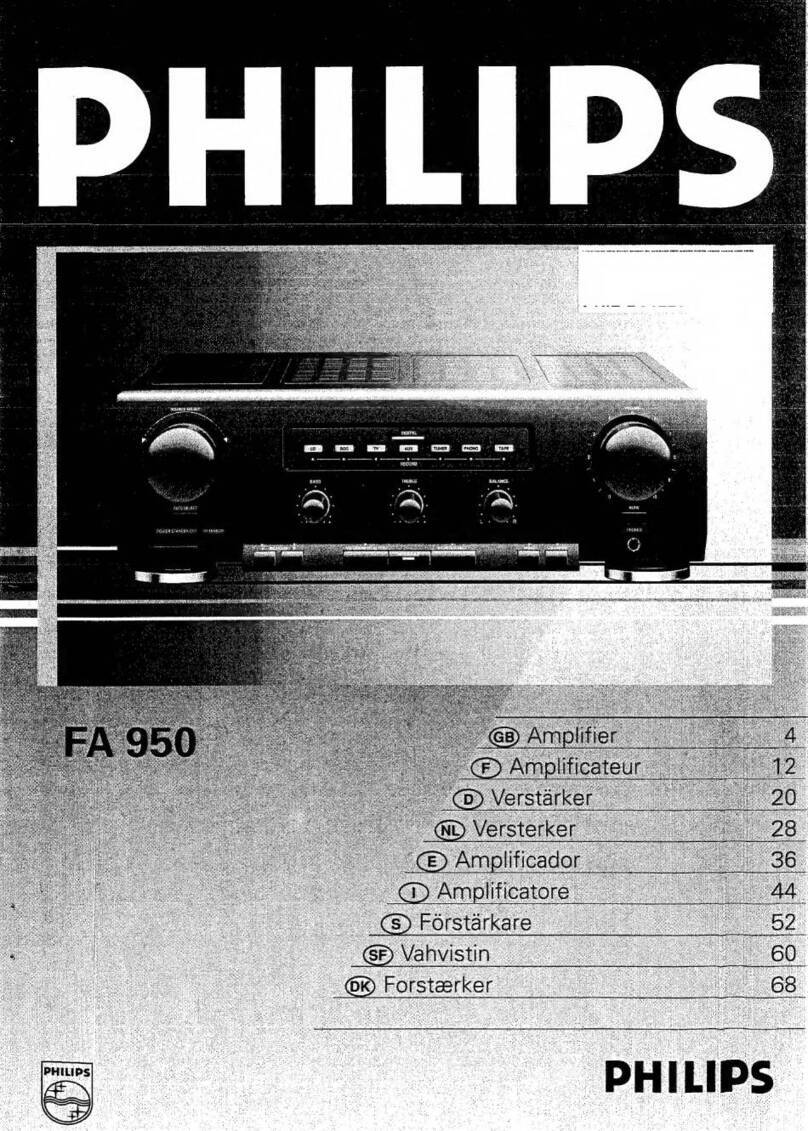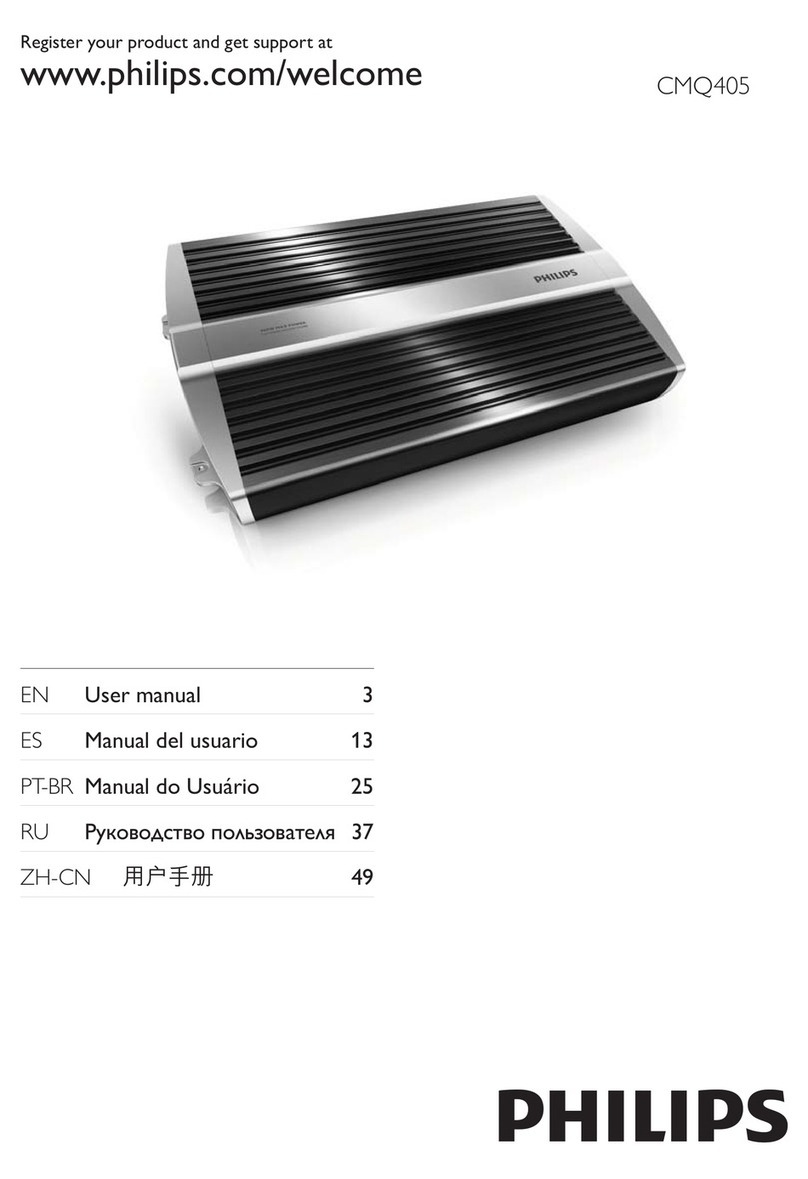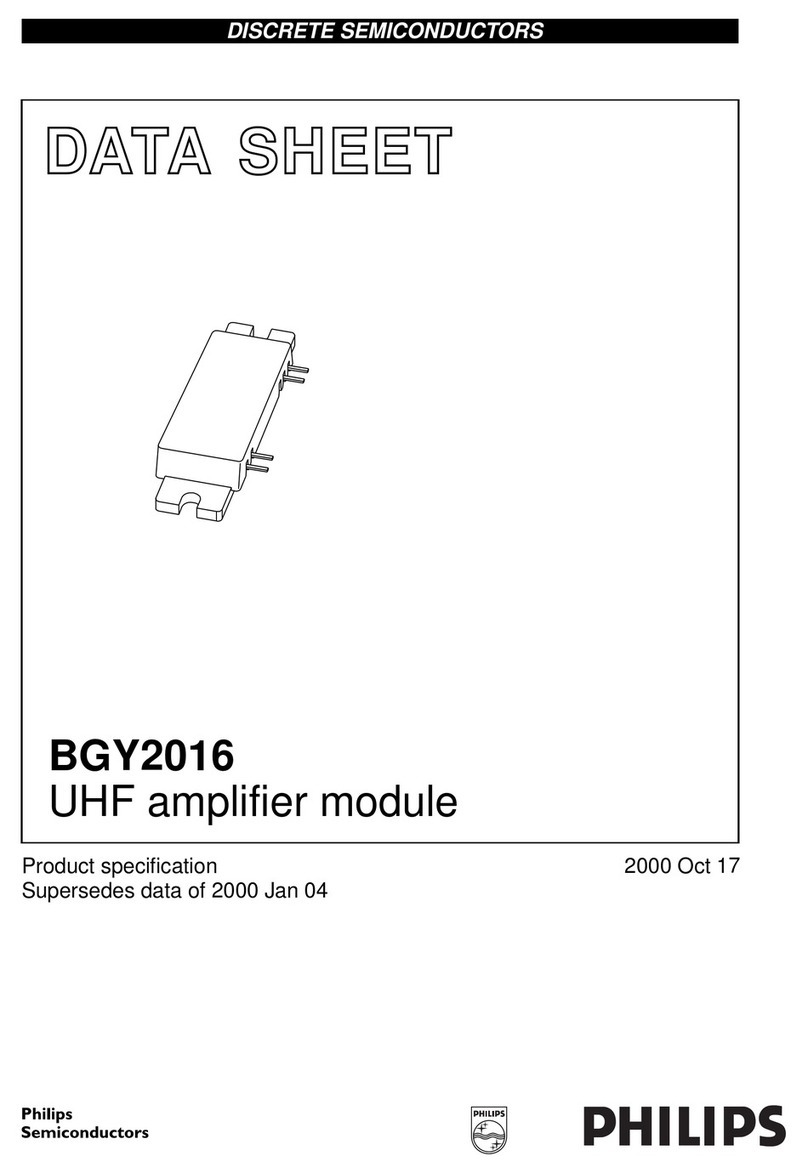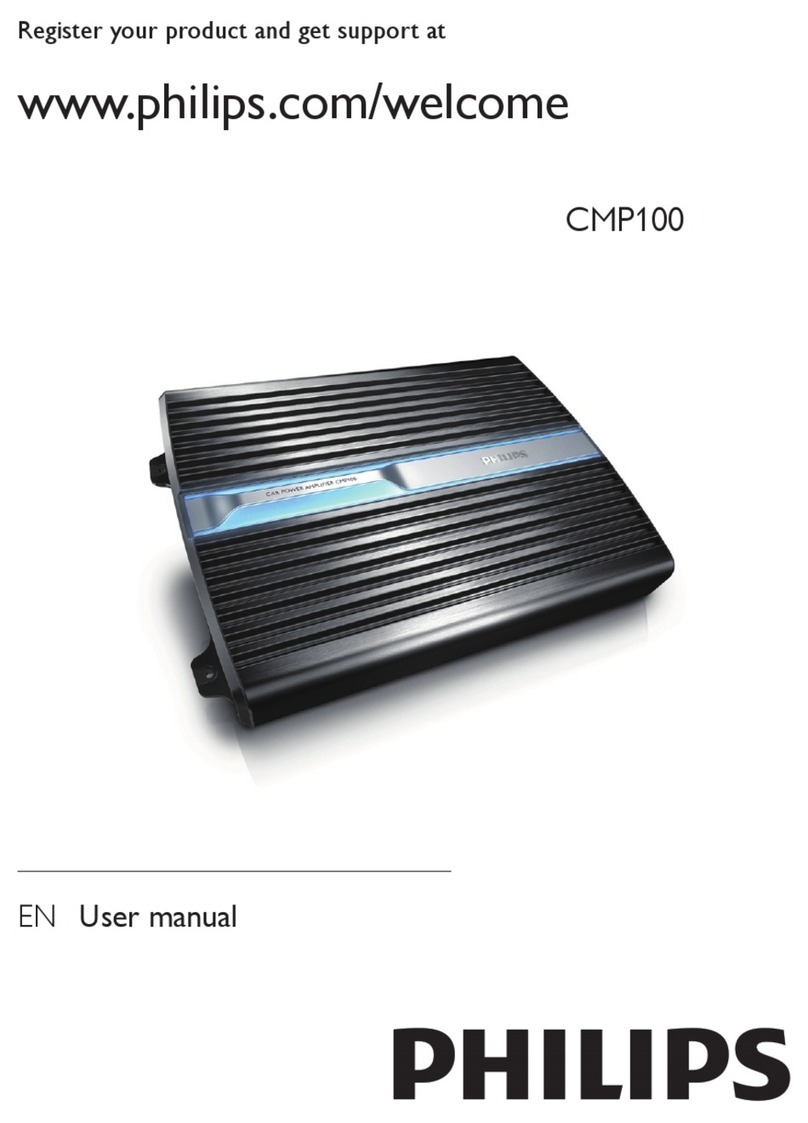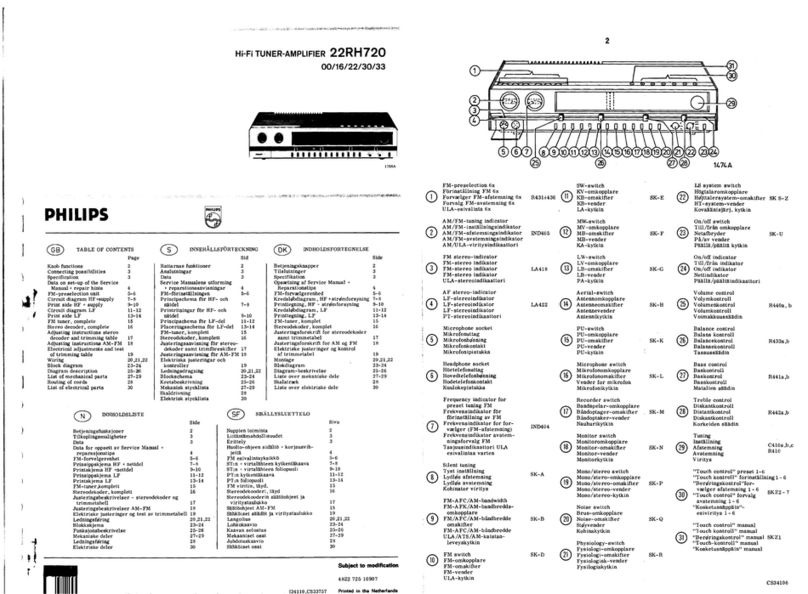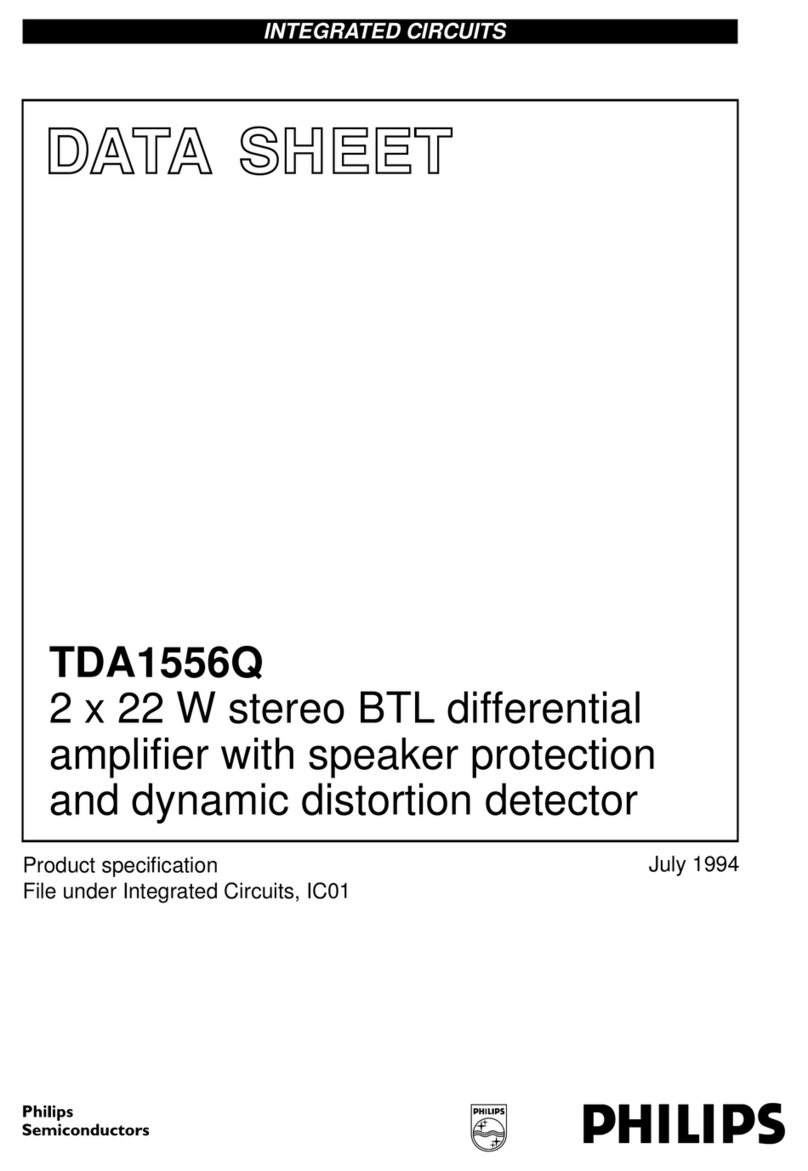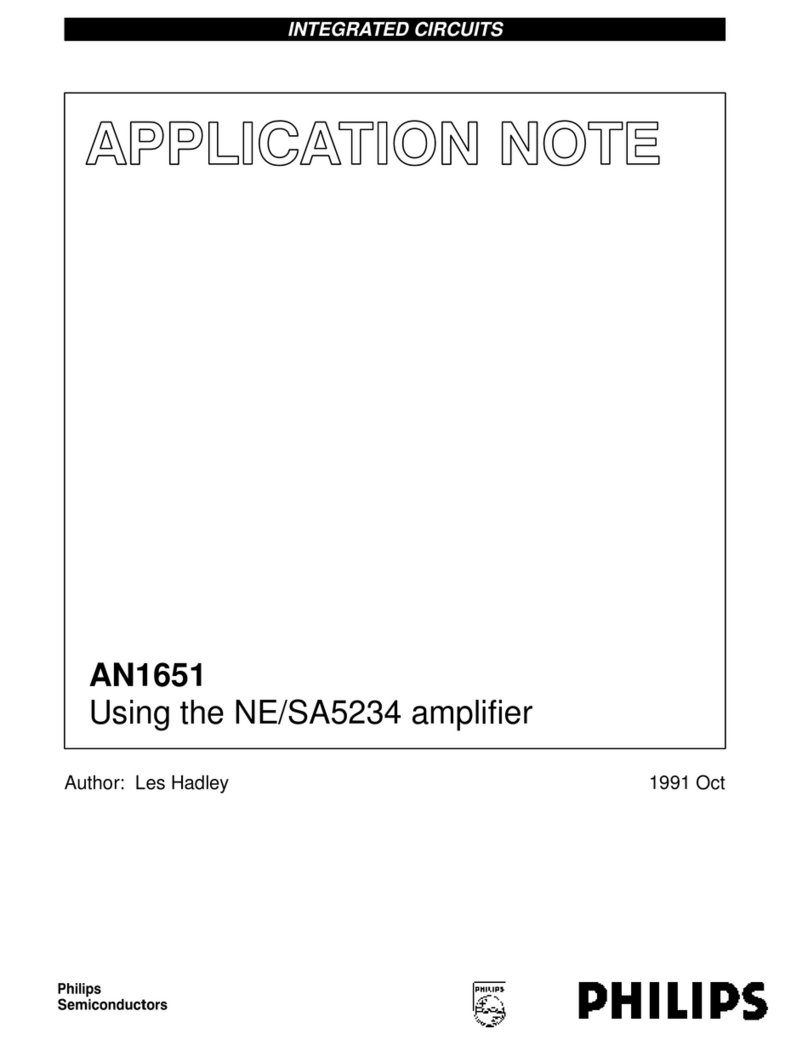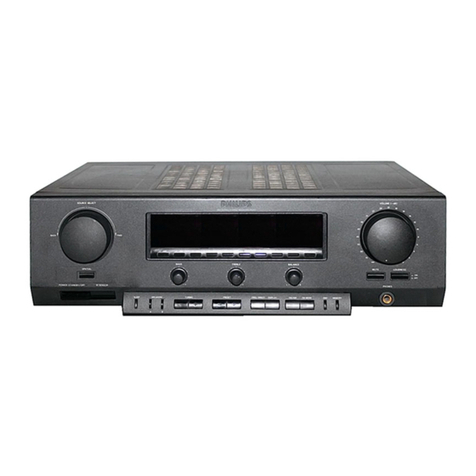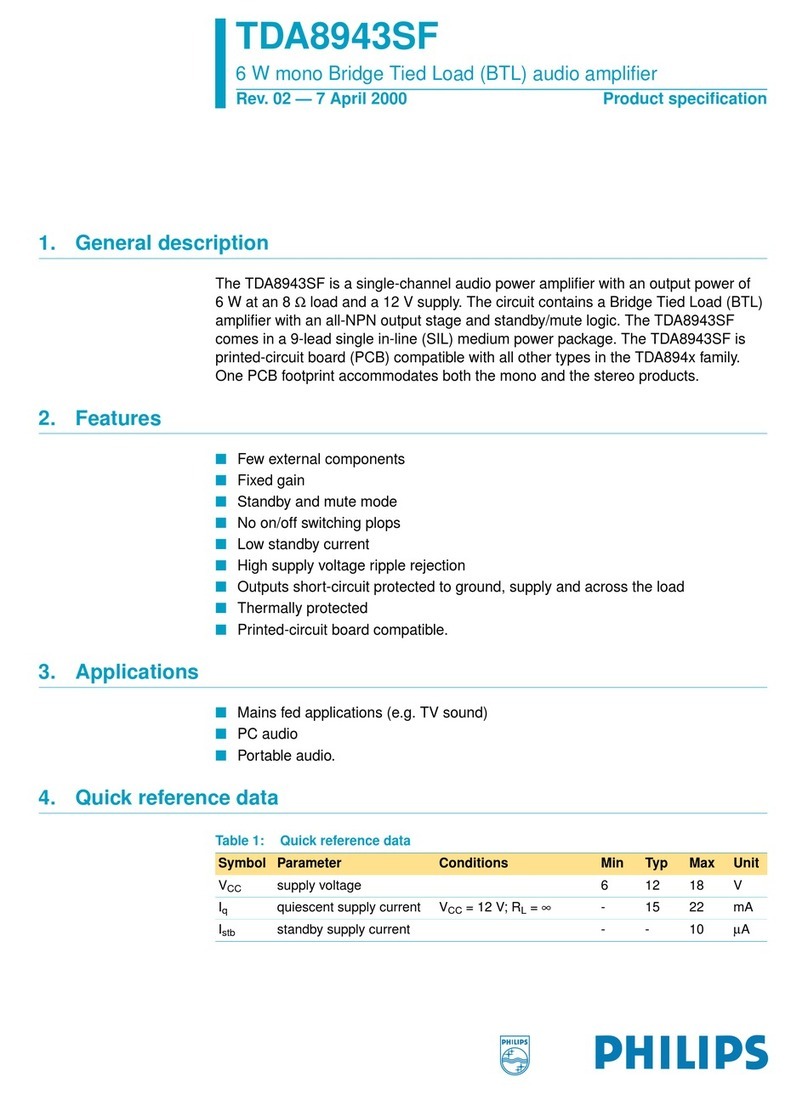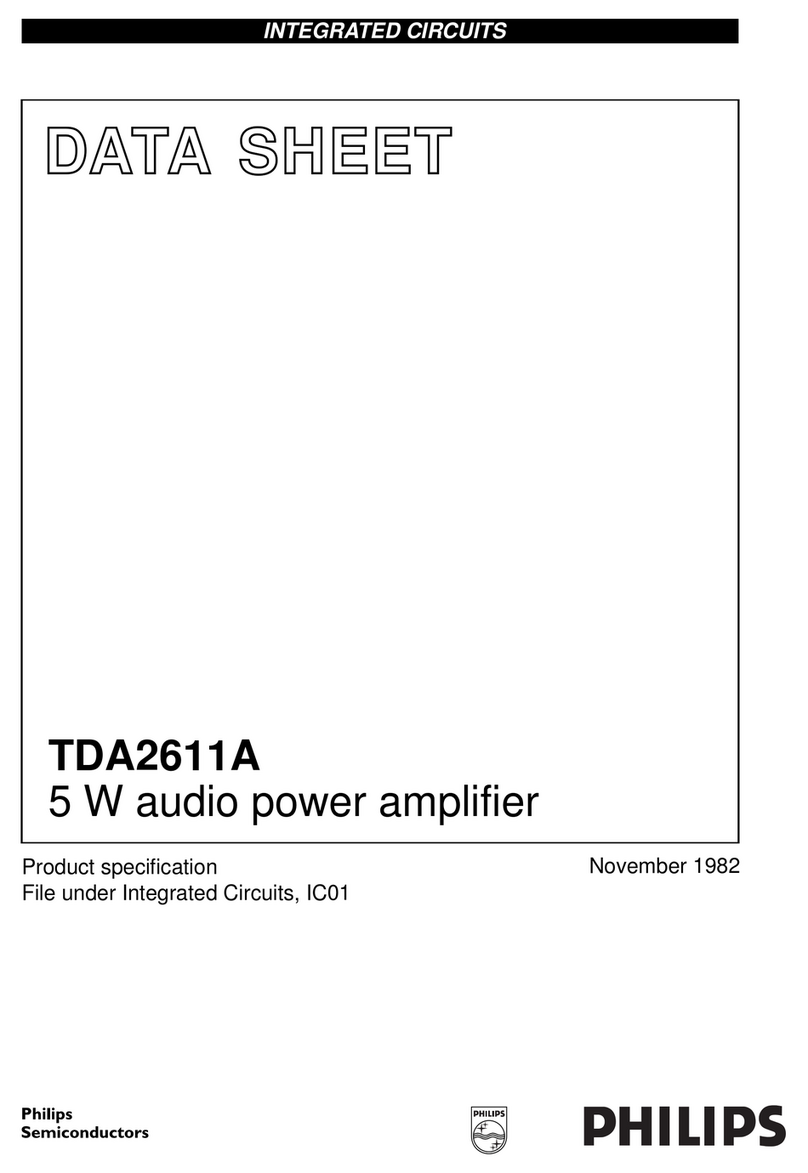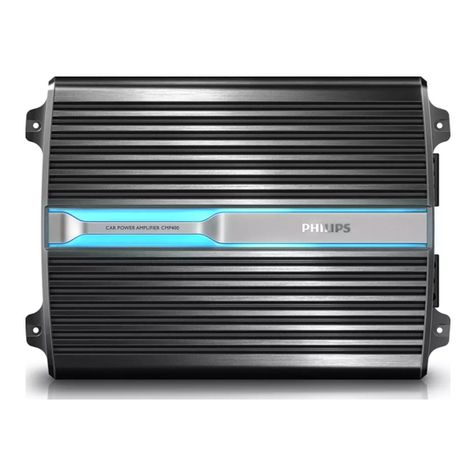4
2.7 Input sensitivity adjustment
The ‘priority’ input sensitivity is optimised
for use with the SM 40 or SM 30 system,
and pre-set at 1 V on delivery. Improving the
sensitivity to 0.5 V is simply a matter of
removing 1 or up to 4 jumpers S3 (S103)
located on the printed circuit board(s) of the
amplifier. The number of jumpers to be
removed depends on the configuration of the
amplifer. For location details of the jumpers
refer to Service Information code no.
4822 861 05034.
The ‘music’ input sensitivity is adjustable
between 0.5 and 10 V to cope with output
levels from external or domestic music
sources, e.g. CD player, radio tuner, and
cassette player etc.
2.8 Parallel connection of inputs
The pre-amplifier output of, for example, a
mixing amplifier, may be connected to the
input of this amplifier, and to the inputs of
several other power amplifiers. Public
Address systems of practically any wattage
can be built by using this method of
connection.
2.9 Loudspeaker connections
On delivery the amplifier is supplied with a
small plastic bag containing two 12-pole
Mate-N-Lok blocks, complete with contact
pin ejector tool (fig. 10). When fitting the
contact pins to the external wiring, they may
be either soldered or crimped.
Also included in this bag are three small
plastic inserts used to cap any redundant
holes left by the sensitivity controls at the
front of the amplifier.
Mate-N-Lok sockets are mounted on the rear
panel, (fig. 2). These are provided with
corresponding plugs, and serve primarily as
transformer output connections to a variety
of loudspeakers. Socket X5 (fig. 2.6) is for
outputs of amplifiers 2 and 3. Socket X6
(fig. 2.7) is used for the outputs of amplifiers
1 and 4.
2.10 Loudspeakers for 100, 70 or 50V
systems
Loudspeakers with suitable matching
transformers can be connected in parallel
with the 100, 70 or 50 V outputs so long as
the total power does not exceed the nominal
output power rating of the amplifier.
The maximum cable length from the
amplifier to the loudspeakers can also be
determined by the amplifier output’s
maximal load capacitance (see technical
data).
100 V loudspeakers connected to the 100 V
output will consume their nominal power. If,
however,100 V loudspeakers are connected
to the 70 V output, then the loudspeakers
power consumption will be equal to one half
of their nominal rated power. This means
that twice as many loudspeakers can be
connected without overloading the amplifier.
Similarly, if 100 V loudspeakers are
connected to the 50 V output they will only
consume a quarter of their nominal power,
and an increase of up to four times as many
loudspeakers is possible.
2.11 In-phase connection of loudspeakers
Disturbing effects can occur, particularly
when loudspeakers are mounted close
together, which are caused by the
loudspeakers being connected in anti-phase.
To ensure an in-phase connection in 100 V
